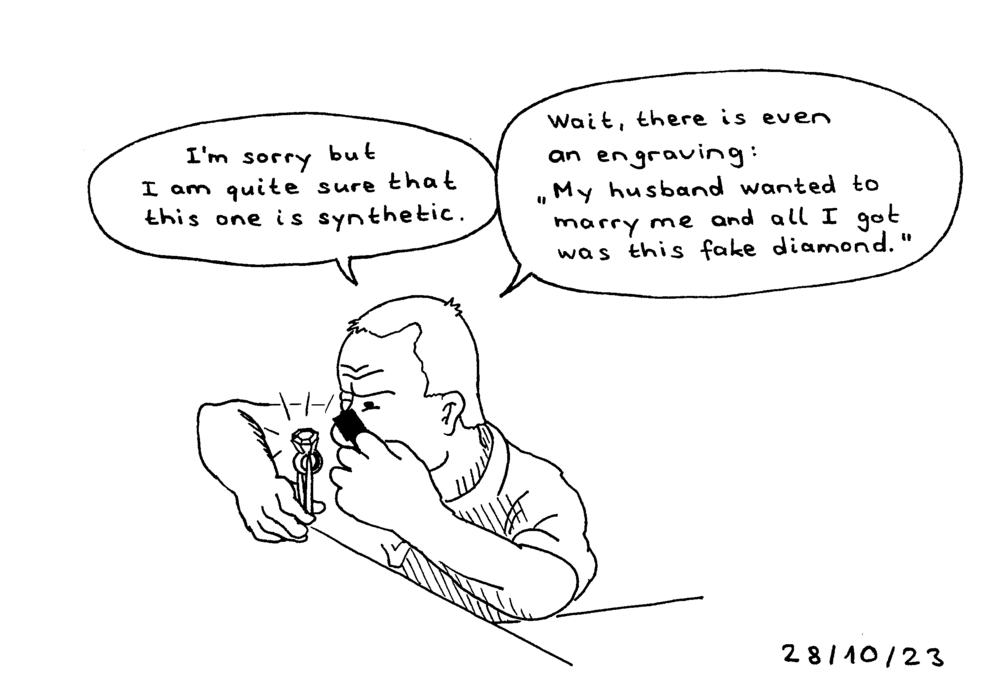INKTOBER DAY 28: SPARKLE
28. Oktober 2023 • 2 Minuten
Diamonds are neither scarce nor do they have much innate value. Yet advertisers have managed to turn them into totems of wealth. We could use the power of storytelling just as well to turn things around: You don’t need shiny things to be happy.
Diamonds have little innate value, and De Beers saw that it was necessary to imbue them with mystique. In the late nineteen-thirties, when global interest in diamond jewelry was low, De Beers hired the Philadelphia advertising agency N. W. Ayer & Son to reinvigorate the allure of diamonds in the biggest market, the United States. A campaign sent the message to aspirant middle-class men that the only proper jewel to give one’s fiancée was a diamond. Prospective grooms were urged to learn the “four ‘C’s” that determine a diamond’s value: color, clarity, carat, and cut.
One Ayer copywriter, Frances Gerety, recalled that women formerly wanted their future husbands to spend money on “a washing machine, or a new car, anything but an engagement ring,” which was considered “money down the drain.” Gerety changed this perception by creating the slogan “A Diamond Is Forever” for De Beers.
[…]
Although the diamond market appears to be a paradox—an abundant resource that relies on the illusion of scarcity—it depends on a deep truth about human desire. We prize diamonds because others prize them.
Even so, diamond prices seem bafflingly high. Compare diamonds with an element like rhodium. Rhodium, which has a silvery sheen, has manifold uses in metallurgy, forms a key component in catalytic converters, and is considered the most expensive precious metal. An ounce costs about ten thousand dollars. A clear, internally flawless rough diamond of the same weight—a hundred and forty-two carats—would cost a jeweller about six million dollars. The Ayer copywriters worked dark magic.
[…]
Diamonds may not be as scarce as the industry would have people believe
[…]
In one sense, I realized, diamonds are baubles—somewhat vulgar totems of wealth. In another sense, they are vessels of deep time unlike anything else that can be found near the surface of the earth.
[…]
“There’s great importance here,” [Oded Mansori, a manufacturer and distributor of rare diamonds] said, to nobody in particular. “Not value. But storytelling. Is there a regular white stone inside? I don’t know. I don’t think so. There might be significant white pieces inside. Significant. But value is secondary. You need to tell the story right.”
— Ed Caesar, The New Yorker
(→ Inktober drawing challenge 2023)

